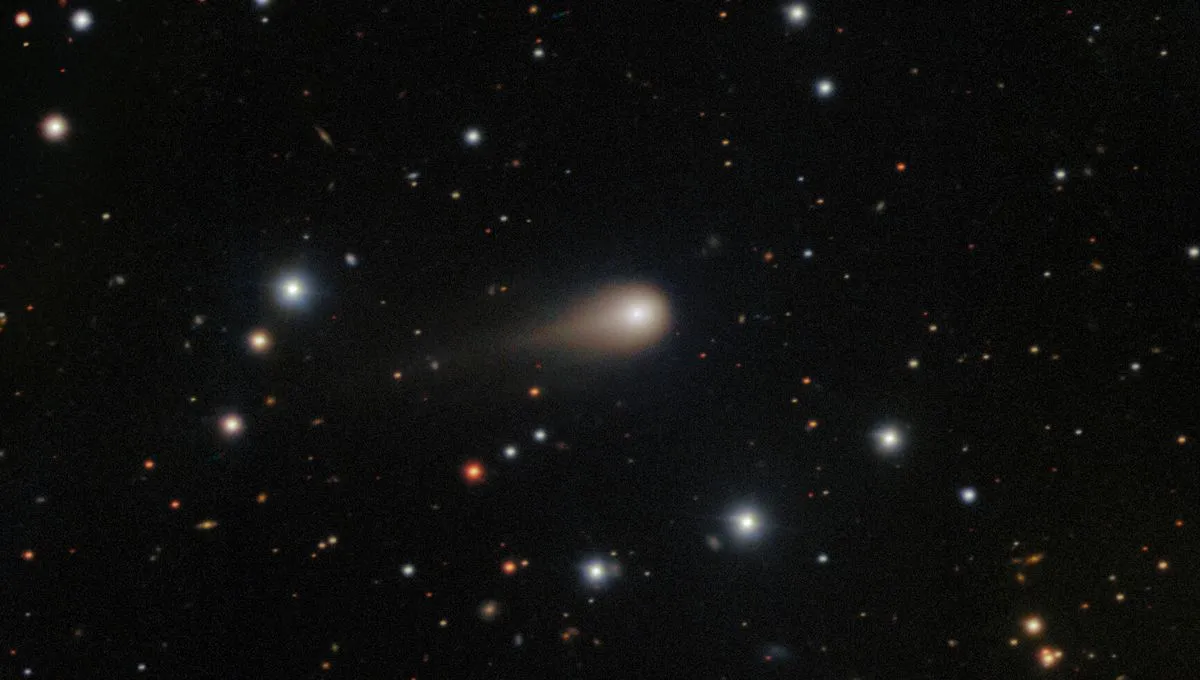
Researchers David Jewitt and Jane Luu have made significant strides in understanding the behavior of Comet 3I/ATLAS by utilizing observations from July to September at the Nordic Optical Telescope in the picturesque Canary Islands. Their research, currently awaiting peer review, reveals fascinating details about the comet’s anti-tail, the composition of its dust, and the rate at which it is losing material on its journey through the Solar System.
As of October 29, Comet 3I/ATLAS will be approximately 203 million kilometers (or 126 million miles) from the Sun. At a distance of 300 million kilometers (which is about 186 million miles), astronomers estimated that the comet was expelling an astonishing 180 kilograms (or 397 pounds) of dust every second. To put this into perspective, losing 180 kilograms of dust in just one second is akin to dumping the weight of two kangaroos or around 11 corgis into interplanetary space!
Every hour, this remarkable comet releases enough dust to equal the weight of six blue whales, and every 20.4 hours, it sheds dust equivalent to the weight of the iconic Brooklyn Bridge. These figures highlight the extraordinary nature of Comet 3I/ATLAS in the realm of cometary studies.
While Comet 3I/ATLAS may not be the most active comet on record, it stands out in comparison to other interstellar visitors. Notably, Comet 2I/Borisov, the second interstellar object ever discovered, released only 70 kilograms (or 154 pounds) of dust at the same distance, which is less than half of what 3I/ATLAS is emitting. This disparity emphasizes the unique behavior of these comets and reflects the diverse characteristics of objects beyond our Solar System.
The differences in emission rates between 3I/ATLAS and Borisov, as well as the peculiarities of the first interstellar object, 1I/’Oumuamua, showcase the variety of celestial bodies in our universe. Comet 3I/ATLAS boasts several record-breaking features, including a faster trajectory and a more eccentric hyperbolic orbit, along with a potential age that may be twice that of the Solar System itself.
Currently, Comet 3I/ATLAS is positioned on the far side of the Sun from Earth, complicating direct observations. At one point, researchers had to rely on Mars orbiters to gather data about the comet. However, this cosmic wanderer is expected to become visible again in our skies soon, and several spacecraft are preparing to capture more of its intriguing behavior over the coming month.
As we continue to study Comet 3I/ATLAS, it serves as a reminder of the wonders that exist beyond our home planet and the ongoing exploration of our Solar System and beyond.